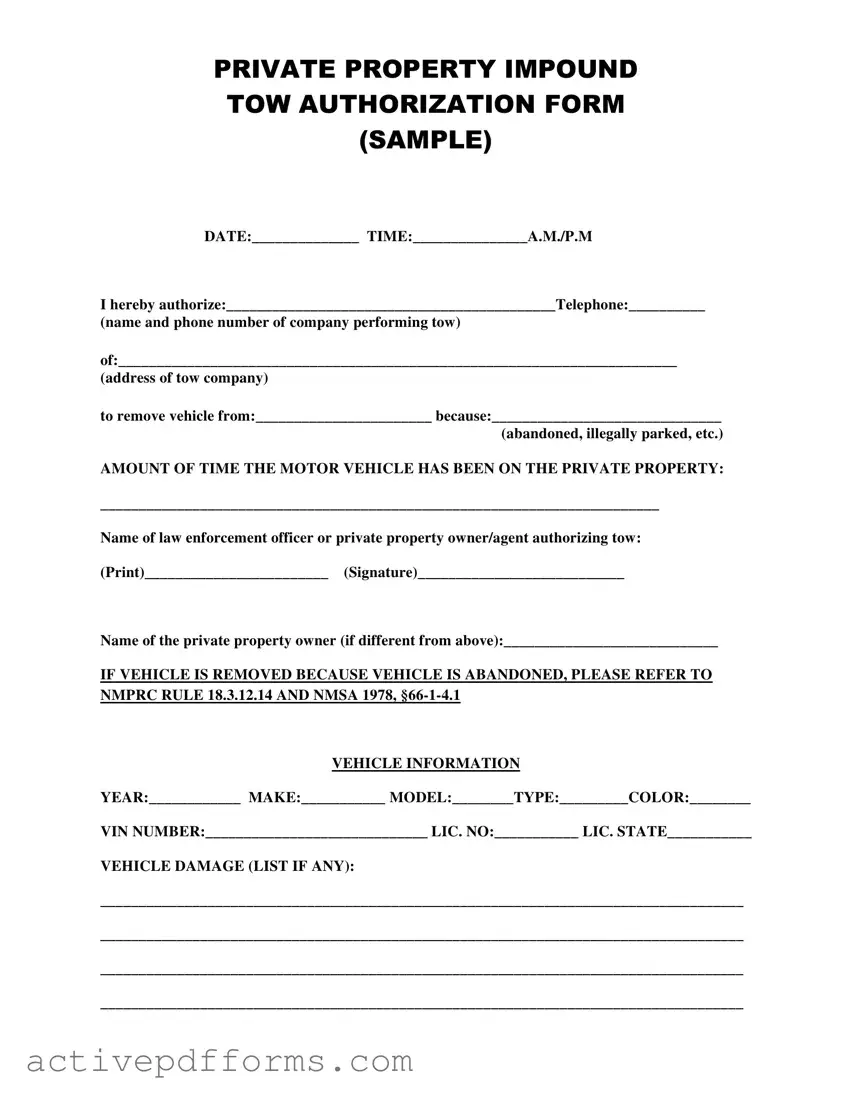PRIVATE PROPERTY IMPOUND TOW AUTHORIZATION FORM (SAMPLE)
DATE:______________ TIME:_______________A.M./P.M
Ihereby authorize:___________________________________________Telephone:__________
(name and phone number of company performing tow)
of:_________________________________________________________________________
(address of tow company)
to remove vehicle from:_______________________ because:______________________________
(abandoned, illegally parked, etc.)
AMOUNT OF TIME THE MOTOR VEHICLE HAS BEEN ON THE PRIVATE PROPERTY:
_________________________________________________________________________
Name of law enforcement officer or private property owner/agent authorizing tow:
(Print)________________________ (Signature)___________________________
Name of the private property owner (if different from above):____________________________
IF VEHICLE IS REMOVED BECAUSE VEHICLE IS ABANDONED, PLEASE REFER TO NMPRC RULE 18.3.12.14 AND NMSA 1978, §66-1-4.1
VEHICLE INFORMATION
YEAR:____________ MAKE:___________ MODEL:________TYPE:_________COLOR:________
VIN NUMBER:_____________________________ LIC. NO:___________ LIC. STATE___________
VEHICLE DAMAGE (LIST IF ANY):
____________________________________________________________________________________
____________________________________________________________________________________
____________________________________________________________________________________
____________________________________________________________________________________
